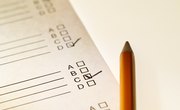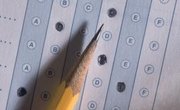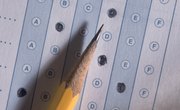Sailing through the math section of the SAT requires determination and dedication. Depending on your learning style, there are a few ways to prepare to take the math section of the SAT.
There are no real surprises on the SAT. You have already covered every question, to a degree, that will be on the SAT in your classes in high school. However, knowing what is on the SAT math section will better prepare you for test day and may help you improve your score.
What to Expect
The SAT test contains three main parts with an optional 50-minute essay. It is broken down into timed sections and takes a total of three hours and 45 minutes to complete.
While you are not allowed to bring your own SAT cheat sheet, there are some official tools and informational sheets provided to you for your use during specific times of the test. The SAT formula sheet provided to you will have the basic shapes and measurements to help you to solve the problems that will be on a specific section of the standardized test.
You will also be able to bring a calculator to the test. There are rules about the type of calculator and what can be on the calculator. Be sure to understand these rules before you enter the testing center with your calculator.
The Entire Math Section of the SAT
The math section of the SAT is allotted 80 minutes to complete. It has three main categories:
- Algebra
- Advanced Math
- Problem Solving and Data Analysis
The remaining math areas are rounded up into the Additional Topics category, which takes up 10 percent of the test questions.
The Types of Math on the SAT
A main portion of the SAT math section focuses on algebra.
The topics on the algebra portion include:
- Solving systems of linear equations
- Linear inequality and equation word problems
- Graphing linear equations
- Interpreting linear functions
- Solving linear equations and linear inequalities
- Systems of linear inequalities word problems
SAT Math Formula Sheet
There are geometry problems laced throughout both sections of the SAT test. This is where the SAT math formula sheet comes in to play. The SAT formula sheet has basic shapes and dimensions and includes:
- The number of degrees of arc in a circle.
- Radians of arc in a circle.
- The sum of the measures in degrees of the angles of a triangle.
As part of your pre-SAT study preparation, make it a point to memorize what is on the SAT math formula sheet. This will save you precious minutes in solving the problem in front of you rather than flipping back and forth from the basic reference information on the provided math formula sheet.
Geometry Section of the SAT
While algebra is the main focus of the SAT, geometry plays a part in the math subscore. This is in the Additional Topics of the math section. It also includes basic trigonometry and complex numbers.
If geometry is not where your strength lies, do not fret. It is only 10 percent of the total of the SAT math section. On the other hand, if you excel in geometry and can race through this part of the test, it can be a boon to your total score if you use the time wisely. Backtrack to any answers earlier in the test that you have access to and do not feel strongly about and go over those more thoroughly.
Make sure to have as many of the basic geometry formulas committed to memory, and you should be able to do well on this relatively small portion of the SAT.
First SAT Math Section
Once the math portion of the SAT begins, you have 25 minutes to complete the first section. You may not use a calculator for this section of the math test.
This beginning section has 15 multiple-choice questions. Each question has four answers with only one possible correct answer. This is followed by five grid-ins, which are student-produced responses. The grid-ins relate to each other as part of a larger question.
Following this 25-minute test, you will be given a short break. If you finish up with a few minutes to spare, go over your answers and double check your math. Often it is the simplest problem that can cause you to miss points on a math test.
Second SAT Math Section
You may use your calculator or the one provided by the testing center for this longer and larger section. The 55-minute section contains a total of 58 questions. It will have eight grid-ins and multiple choice questions that will offer four answers, but only one will be correct.
Approved Calculators for Testing
The calculators that are approved for use during the second part of the SAT are:
- TI-86 and TI-89 graphing calculator
- TI-89 Titanium graphing calculator
- TI-Nspire graphing calculator
- TI-Nspire CX graphing calculator
If you bring in a calculator that is not on the list, it will be removed from you and kept until the test is completed. You will not have access to it during breaks or at any time during the test.
You may not share a calculator with any other students. During the test, the calculator must be stored away, including while you complete the reading and writing portion of the SAT. To ensure your calculator performs at its peak during the timed test, put fresh batteries in it and have extra batteries on hand, just in case.
How the SAT Score is Calculated
Your SAT score will fall within the range of 400 and 1600 and is a combination of your math subscore and reading and writing subscore. A score of 1000 or better is average. A score above 1400 is above average.
Your percentile shows how well you did on the test compared to your peers. If you are in the 50th percentile, which is within the average range, then you did better than 50 percent of the other students who took the test.
Average Score for the Math Section
The average subscore for the math section of the SAT is between 520 and 530. For those considering a career in math-related fields, such as science, engineering or medical research, your SAT math subscore will carry more importance for college admission and possible future career opportunities.
How to Prepare for the SAT
The various things to know for the SAT include all that you have studied for and tested during your high school curriculum. That being said, going over all you have learned can be an exhaustive endeavor. Expand your studying plan to include a few online and in-person study aides, such as:
- Free online practice tests can help you discern exactly what will be covered on the test, the style with which it is presented as a problem to solve, and where you may be lacking in your understanding of the math material.
- Community classes, study groups or a private tutor can also help you to study for the types of questions and subjects that the SAT will focus on.
- A few days before the test, complete a few practice math problems in areas where you have the least amount of confidence to refresh your memory.
Related Articles
References
Writer Bio
Kimberley McGee is an award-winning journalist with 20+ years of experience writing about education, jobs, business trends and more for The New York Times, Las Vegas Review-Journal, Today’s Parent and other publications. She graduated with a B.A. in Journalism from UNLV. Her full bio and clips can be seen at www.vegaswriter.com.










